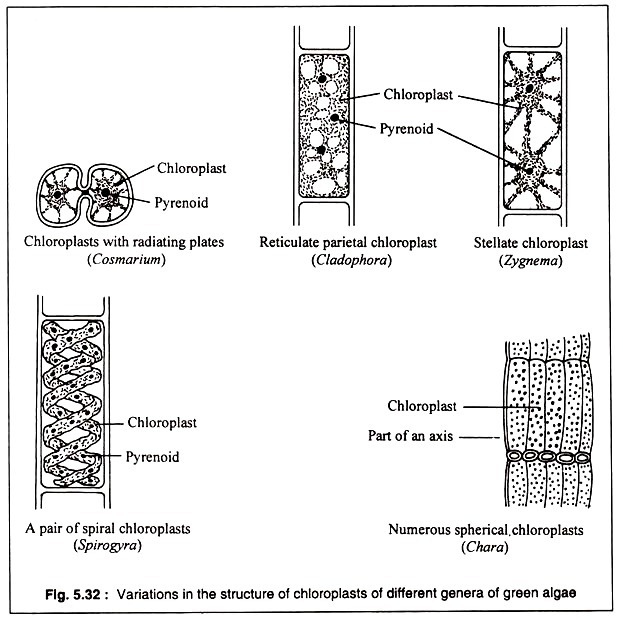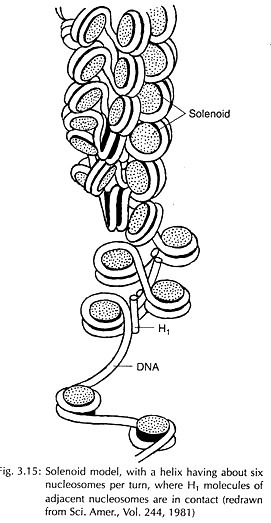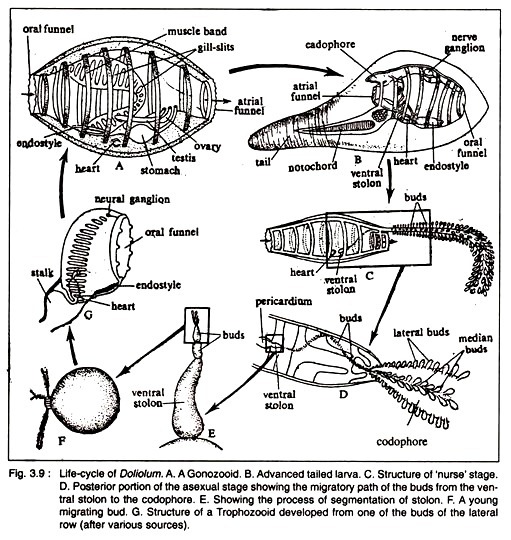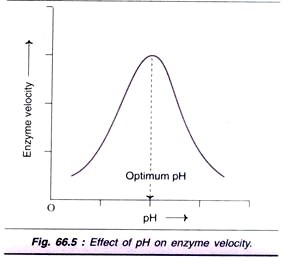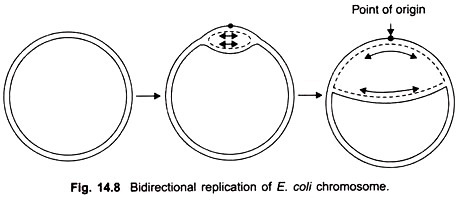ADVERTISEMENTS:
Read this article to learn about the principles and specimen preparations of microscopy.
The specimen preparation of microscopy includes three steps. The three steps are: (1) Fixation (2) Sectioning and (3) Staining.
Principles:
Microscopy is necessary to evaluate the integrity of samples and to correlate structure with function. Microscopy serves two independent functions of enlargement (magnification) and improved resolution (rendering of two objects as separate entities).
ADVERTISEMENTS:
Light microscopes employ optical lenses to sequentially focus the image of objects, whereas electron microscope uses electromagnetic lenses.
Light and electron microscopes work either in transmission or scanning mode depending on whether the light or electron beam either passes through the specimen and is diffracted or deflected by specimen surface. Polarized light microscopes detect optically active substances in cells; for example, particles of silica or asbestos in lung tissue.
Phase contrast microscopes are often used to improve image contrast of unstained material which is caused either by diffraction by the specimen or even by differences in thickness of the specimen. At their point of focus, the converging light rays shows interference, resulting in either increase or decrease in the amplitude of the resultant wave (constructive or destructive interference, respectively), which the eye detects as differences in brightness.
Confocal microscopy is an imaging technique used to increase micrograph contrast and/or to reconstruct three-dimensional images by using a spatial pinhole to eliminate out-of-focus light or flare in specimens that are thicker than the focal plane. This technique has been gaining popularity in the scientific and industrial communities.
ADVERTISEMENTS:
Typical applications include life sciences and semiconductor inspection. In a conventional (i.e., wide-field) fluorescence microscope, the entire specimen is flooded in light from a light source. Due to the conservation of light intensity transportation, all parts of specimen throughout the optical path will be excited and the fluorescence will be detected by a photo detector or a camera.
In contrast, a confocal microscope uses point illumination and a pinhole in an optically conjugate plane in front of the detector to eliminate out-of-focus information. Only the light within the focal plane can be detected, so the image quality is much better than that of wide-field images.
As only one point is illuminated at a time in confocal microscopy, 2D or 3D imaging requires scanning over a regular raster (i.e., a rectangular pattern of parallel scanning lines) in the specimen. The thickness of the focal plane is defined mostly by the square of the numerical aperture of the objective lens, and also by the optical properties of the specimen and the ambient index of refraction.
Microscopes using visible light will magnify approximately 1500 times and have a resolution limit of about 0.2 mm whereas a transmission electron microscope is capable of magnifying approximately 2,00,000 times and has a resolution limit for biological specimens of about 1 nm. This capability of TEM is largely a function of the very short wavelength of electrons accelerated under the influence of an applied electric field. (An accelerating voltage of 100 kV produces a wavelength of 4 × 10-3 nm.)
Scanning electron microscopes (SEM) use a fine beam of electrons to scan back and forth across the metal coated specimen surface. The secondary electrons are generated from this surface collected by a scintillation crystal, which converts each electron impact into a flash of light.
ADVERTISEMENTS:
Each light flash inside the crystal is amplified by a photomultiplier and used to build up an image on a fluorescent screen. The principle application of SEM is the study of surfaces such as those of cells. The resolution limit of scanning electron microscope is about 6 nm.
Specimen Preparation:
This includes three steps:
1. Fixation
2. Sectioning, and
ADVERTISEMENTS:
3. Staining.
TEM requires thin specimens, i.e., squashes, smear, hanging drops or very thin sections. For preservation of cellular integrity first sample is fixed either by rapid freezing or by chemical treatment. Generally used fixatives are formaldehyde (primarily used in light microscopy) and glutaraldehyde (for electron microscopy) is the result of formation of methylene bridges with side-chain amino groups of proteins, whilst osmium tetroxide, a common fixative in electron microscopy, cross links mainly with unsaturated fatty acid side chains. Fixed tissue is then subjected to sequential process of sectioning and staining.
Fixed tissues, when not frozen, need support before proceeding for sectioning. Embedding media such as waxes and epoxy resins (Araldite or Epon) are immiscible with both water and alcohol, which necessitates initial dehydration and equilibrium of fixed tissues by passing them through increasing concentration of ethanol followed by transfer to xylene or propylene oxide, before infiltration with an appropriate embedding medium in its liquid phase.
Sections of 5-10 µm thickness are obtained by cryostat from 20 refrigerated samples. Ultra-thin sections for TEM (less than 100 nm) are cut with ultra microtomes using diamond or glass as cutting edge. Section ribbons are floated onto water and mounted on fine copper grids for staining and examination.
In negative staining, a heavy metal stain, often phosphotungstic acid, is allowed to dry in a puddle around the surfaces of isolated cell particles supported on a thick carbon or plastic film. The stain molecules are deposited into surface crevices in the specimen during drying and produce ghost image in which the specimen appears light against dark background, often outlining details very clearly. The contrast can further improve by technique of shadowing.
Antibodies prepared against specific cellular proteins, which have absorbed colloidal gold are frequently used for staining in TEM as gold is electron dense. Freeze-fracture techniques in which frozen samples are cleaved with a knife along facture planes in a membrane, utilize this shadowing techniques to produce replicas of broken cellular materials that show the membrane surface structure on and within the cell organelles.
Samples for ion probe analysis are prepared either by chemical fixation or, more successfully, by ultra-rapid freezing methods, such as immersion in liquid propane or nitrogen slush , which serves to immobilize ions. Where frozen tissue is used, sections must be ultra-thin and are obtained by ultracryomicrotome.
Histological stains are used to produce contrast, which aids resolution. Many stains used in light microscopy depend upon the anionic or cationic behaviour of intracellular ampholytes and their efficiency to influence pH. Cytoplasmic contents are generally cationic in slightly acid pH range, implying preferential binding to anionic (acid) stains such as eosin.
Chromatin and DNA at pH 6.0 are anionic and thus binds to cationic stains such as methylene blue. Contrast in material for TEM is improved by incorporating heavy metal salts into the specimens to induce a greater extent of electron absorption. This can be exploiting the binding of uranium to nucleic acids and proteins and of lead to lipids.





